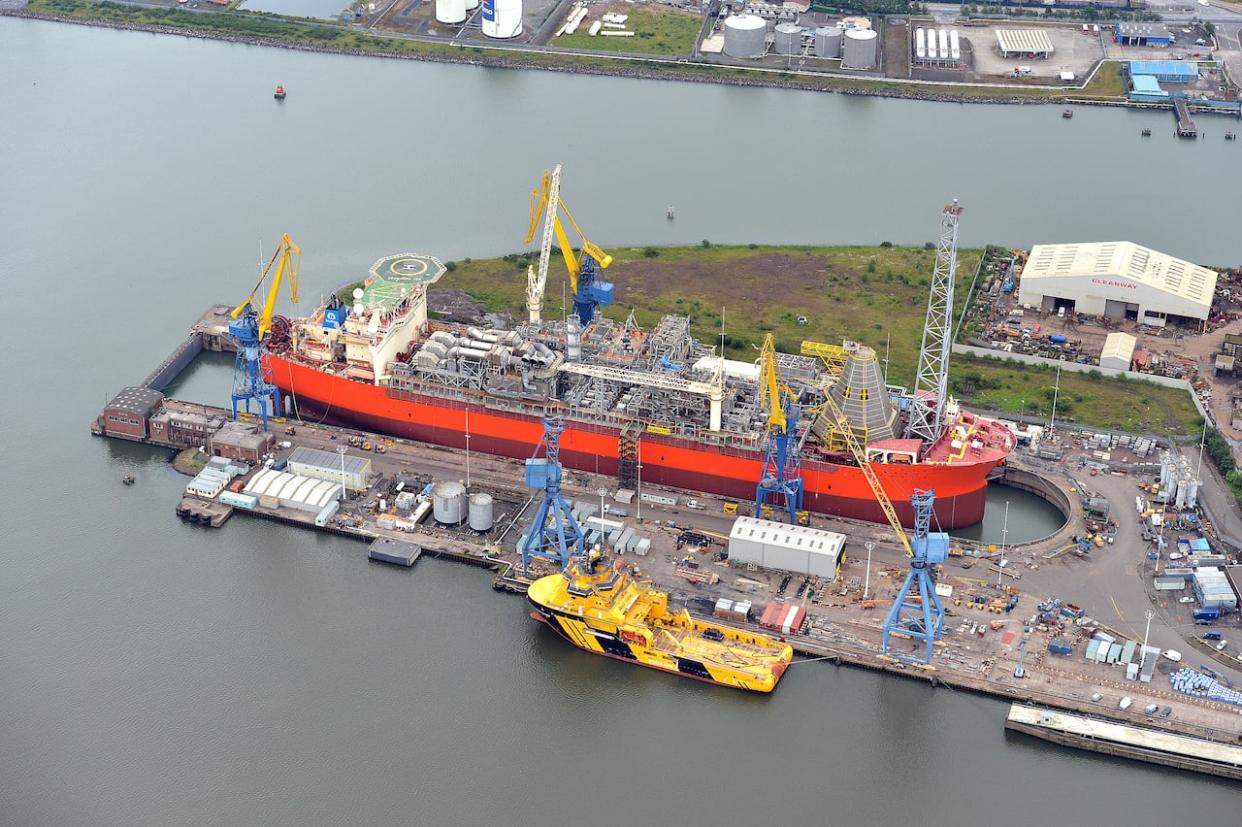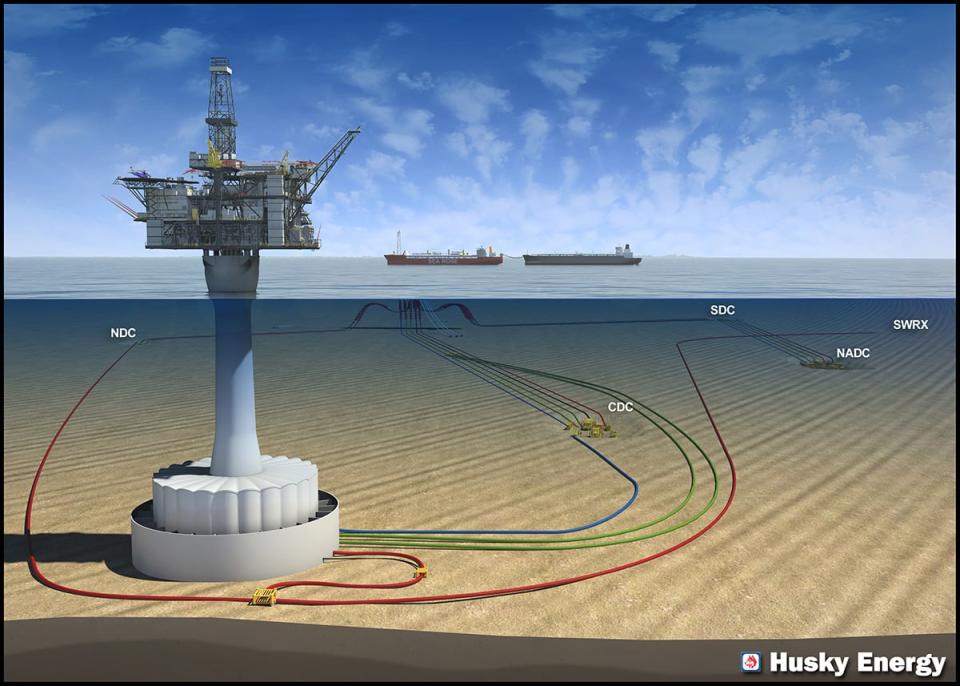SeaRose FPSO heading for drydock as Cenovus eyes future of White Rose oil field

The vessel used to produce, store and offload oil from the White Rose field in offshore Newfoundland will cease operations this month and travel to Ireland for a $100 million refit.
The SeaRose FPSO will be drydocked at the Harland and Wolff shipyard in Belfast in order to remain current with Transport Canada regulatory requirements, according to a statement from Cenovus Energy, the Calgary oil company that operates the White Rose field.
Other partners in the field include another Calgary oil giant, Suncor, and OilCo, Newfoundland and Labrador's government-owned oil company.
It's just one component of a multi-billion-dollar life extension project for the field, which includes ongoing construction of a satellite project called the West White Rose fixed drilling platform. Cenovus reported last fall that the project is 70 per cent complete, and is on target for first oil in 2026, with daily production expected to reach 80,000 barrels.
West White Rose, which will be Newfoundland and Labrador's first offshore wellhead platform, consists of a concrete base that's being built at a special graving dock at the Port of Argentia and integrated topsides facilities that are under construction in Ingleside, Texas.
The White Rose field began producing oil in 2005 and is of four mature fields in the offshore.
SeaRose too big for Canadian drydocks
The SeaRose refit, meanwhile, will include hull maintenance that requires the vessel, which is 271 metres long and 46 metres wide, to be taken out of the water. The company said it was necessary to send the SeaRose to a foreign port because the facilities do not exist in Canada to drydock the vessel. The Irish shipyard carried out a previous refit of the SeaRose in 2012.
The drydocking will extend the life of the vessel for at least another 14 years and "enable continued safe and reliable operation at the White Rose field," the company stated.
The SeaRose is expected to return to the White Rose field and resume production this summer.
The contract with Harland and Wolff was signed last fall, and according to a news release from the shipyard, is valued at £61 million, or roughly $104 million in Canadian currency.

This is a rendering of the West White Rose extension project. The project will be offshore Newfoundland's first fixed wellhead platform, and will be linked by subsea flowlines to the existing SeaRose FPSO production vessel. The platform will extend the life of the White Rose oil field by 14 years and give Cenovus access to an extra 200 million barrels of oil. (Husky Energy)
The SeaRose is scheduled to be in drydock for more than three months, with some 1,000 personnel working on the refit.
According to its website, the Belfast yard is "one of Europe's largest heavy engineering facilities, with deep water access, two of Europe's largest drydocks, ample quayside and vast fabrication halls."
Cenovus announced last fall that it plans to spend nearly $1 billion this year on the SeaRose refit, and ongoing construction of the West White Rose project, which will support future production in the field until at least 2038. This does not include the share of expenditures by Suncor, which has a roughly 40 per cent ownership stake, and OilCo, which has a five per cent stake in the White Rose satellite fields.
Cenovus estimates its daily oil production in offshore Newfoundland in 2024 to range between 10,000 and 15,000 barrels, which reflects the impact of production interruptions at the SeaRose.
While the SeaRose is in refit, upgrades to various subsea components such as mooring chains and turret buoys will also take place, according to Cenovus.
According to the 2022-23 annual report from the offshore regulator, the SeaRose produced just under 7.3 million barrels of oil in 2021, with total production of 265 million barrels up to March 31, 2023.
The report reveals the SeaRose averaged 45.51 kilograms of carbon emissions per barrel of oil in 2021. By comparison, Hibernia averaged 14.61 kilograms, while Hebron averaged 8.99 kilograms. There was no data on the Terra Nova FPSO in 2021 because the vessel was not producing.
Status reports published weekly by the regulator indicate the SeaRose was producing oil for the week of Dec. 17 to Dec. 24.
A quarterly industrial report from the third quarter of 2021 — the latest available on the regulator's website — lists the number of people working onshore and offshore in the White Rose field at 660, with more than 90 per cent of those workers residing in Newfoundland and Labrador.
Download our free CBC News app to sign up for push alerts for CBC Newfoundland and Labrador. Click here to visit our landing page.

